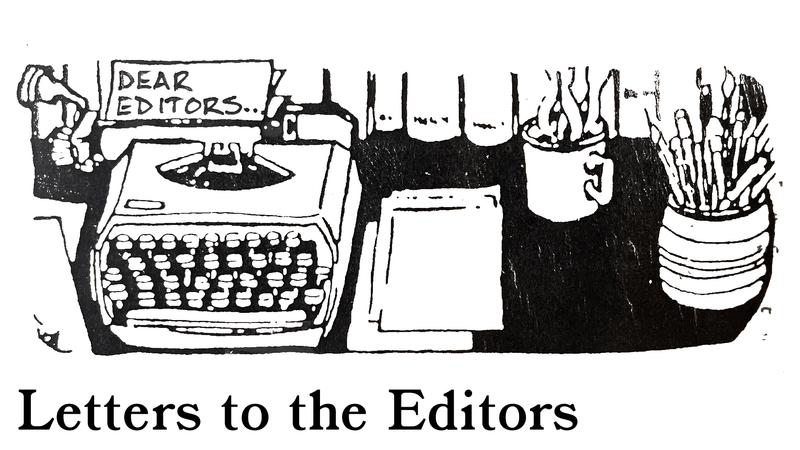It dawned on me the other day, much as it does at least once a month, that there is so much information in the world that one could never possibly begin to grasp just how much knowledge is at our fingertips at any given time; that soul-crushing feeling you get when you stroll through a library to do research and note that only a fraction of this material will ever enter your mind, and you wonder where to start.
If you ask me, it's a pretty minimal issue to have. Even still, it has me questioning “How can we better use our resources at Trent to expand our literary and historical comprehension?” I have a solution or at least part of a solution: it’s the Trent Archives.
With a team that does just about everything from primary source care to donation collection through research assistance, the Trent Archives is our hidden gem.
A place for students & the community:
Located on the first floor of Trent’s central building, the Bata Library, the Trent Archives work to serve the Trent student body, Trent Faculty, instructors, staff, and other members of the surrounding community.
Opening their doors to alumni in the spring of 2023, the Trent Archives works to incorporate a community-based identity by preserving yearbooks, class photographs, and student publications, among other materials. Collecting a mass of material related to research interests at Trent, the archives serve as a great tool for your academic or individual conquests.
Spanning from archival footage within a documentary, a photograph in a magazine, or historical reference in a book, it’s likely you have already come into contact with second-hand references from Trent’s Archival material. What you may not know is where these documents originate or that the archives are open to anyone.
With a team of two core staff members and the help of student staff and volunteers, the Trent Archives are continually seeking opportunities to provide individuals access to their collections. By both acquiring a range of materials and managing these collections, much like any archival collection, the Trent Archives are working to create a system which will preserve and provide an in-depth understanding of their materials.
Working to amass information in an accessible way, the Trent Archives is working to further enrich written descriptions of their database collection. Incorporating staff, volunteering programs, and faculty to improve descriptions of ‘older collections’ the online archives database is more easily accessible. If you are curious check it out for yourself at archives.trentu.ca
Don’t get me wrong, I love my online sources as much as the next person, but why work fully online when so much physical information is within your grasp? As the Trent archives possess nearly 10 linear km worth of material, it seems completely unreasonable to assume every historical piece that lands in the archives has been digitized.
With implications from copyright and privacy legislation, there is a mass of limitations placed on what is able to be accessed online and what is not. The moral of the story is don't limit yourself to the Trent Archives online, because they are simply “bursting at the seams with fascinating material that can lead to original research.”
If you are curious and looking for further reasoning as to why archivists don't digitize everything feel free to take a look at this Peel archives blog:
A Tool for Truth in the Calls for Action for Truth and Reconciliation:
As a tool for the preservation of the past, it is relevant to consider “what is the importance of archival systems?” For a moment, consider our contemporary issues. How do we deal with the past and what can we do to improve our knowledge of the past to improve our future?
Holding fundamental information, archives play a larger role in the social comprehension of the past than you may think. Take, for example, the current work which is being done under the Truth & Reconciliation Committee (TRC)’s calls to action. The Trent University Archives has accumulated a multitude of material both “by and about Indigenous peoples,” says University Archivist Karen Suurtamm.
Being that the material is transcribed directly so as to reproduce exact historical replicas in the finding aids and databases, Suurtamm admits the information presented may be “problematic, outdated, inaccurate, and/or portraying offensive language.”
Even still, this is the beauty of historical preservation. Working to provide access to real information transcriptions are taken directly from the source. No whitewash, no cover-up. Our history, as a society is offensive, and dark, at times it's downright sad. But we can learn nothing as a society by dismissing our history.
To truly know ourselves and move forward there has to be a place which provides this information in its truest form. While we may not agree with certain language or the stories conveyed they are still a part of our history; a history we must confront.
Currently implementing things like content warnings and increasing the inclusion of sources created by Indigenous communities, the Trent Archives provides access to the Truth aspect of our social responsibility for Truth and Reconciliation. An example of this being the recent collection of materials on Indigenous performance, donated by Trent professor, Marrie Mumford.
Working to further publicize the understanding that the Trent Archives are both accessible to students and the community, the archives are a convenient local system for researchers. While it may be difficult to comprehend just how much material resides within our archives, the best way to experience and utilize this resource is to immerse ourselves.
Holding class visits and providing one-on-one research support is as simple as sending an email or accessing the database. Explore the website, don’t let your learning be impacted by a lack of information, utilize your resources, and engage with our history.


.png)


.jpg)

.jpg)
.jpeg)



.jpg)


.jpg)









.png)